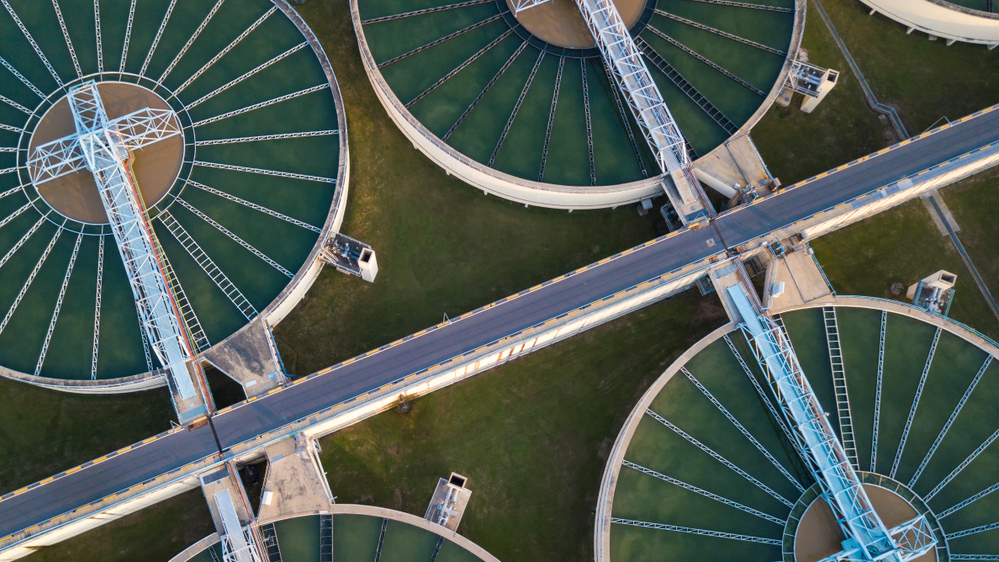
CDP: water security is a $2.3 trillion opportunity
Five years of corporate disclosures suggest the commercial viability of water security is hard to ignore.
Samuel Taylor Coleridge’s The Rime of the Ancient Mariner includes an infamous adage: “Water, water, everywhere. Nor any drop to drink”.
Words written in 1798 are at the heart of a resurging debate on water management in 2023 – a year in which the United Nations convened a global water conference for the first time in 46 years.
Addressing water security is now being seen as a critical ingredient in corporate net zero strategies. New research by the Carbon Disclosure Project (CDP), a global non-profit, shows that investing in water security is not only environmentally prudent, but also commercially judicious.
The organisation is valuing the opportunity to address water security at $2.3 trillion.
We regularly assess how companies manage their water-related risks and opportunities, and use this information to inform our company engagement, voting, risk management and investment decisions
Water security and net zero.
Water security – the availability and accessibility of recommended quality and quantities of water, is a vital ingredient in the road to net zero. The United Nations’ definition of the concept focuses on protecting communities and assets against water-related disasters i.e. adaptation strategy in investor parlance.
It also feeds into climate mitigation. In 2022, a group of Swedish researchers concluded that water security is a “make-or-break” factor in transitions in not only energy but also food systems.
With close links to mitigation and adaptation, it would seem likely that investors assess water security for their investee companies. Carine Smith Ihenacho, chief governance and compliance officer at Norges Bank Investment Management agrees:
“We regularly assess how companies manage their water-related risks and opportunities, and use this information to inform our company engagement, voting, risk management and investment decisions” she wrote in a CDP report published earlier this year.
CDP’s research outlines channels through which corporate action on water security translates into competitive advantage:
Top-line value.
According to the disclosures, one of the key financial benefits of investing in water security is an expectation of top-line growth i.e. increases in revenue. In other words, if a product, service or technology factors in water security in its design or operation, companies are confident they could sell more of it.
Consumer preferences, which favour products and services with a low environmental footprint, are driving this confidence.
Companies in manufacturing expect this to be a $76 billion opportunity while those in infrastructure collectively expect to make $12 billion in additional sales if what they sell is more water secure.
CDP’s report mentions the case of Unilever, the global consumer goods giant:
“Unilever’s brand of dishwashing liquid (‘Sunlight’) that uses much less water than its other brands, has outpaced category growth by more than 20% in a number of water-scarce markets”.
According to CDP, new products and services represent a $300 billion opportunity.
Efficiency, efficiency, efficiency.
Of all the sectors CDP assessed, the highest number of opportunities to create value through water security were reported by the power generation sector. The main driver of this was gains associated with water efficiency in renewable energy production.
More specifically, improving the efficiency of water-cooling used in geothermal energy was reported as a value-driver for power generators.
According to the IEA, several transition-linked inputs and processes such as biofuels, carbon capture, utilisation and storage and nuclear power are water-intensive. This implies that improvements in efficiency would be beneficial to the financial viability of projects.
Even beyond power generation, efficiency is a key consideration.
For instance – Samsung, the South Korean conglomerate, reported a $99 million financial benefit expected from a reduction in water utility costs. A reduction, which depends heavily on water efficiency.
“Water efficiency was the most commonly reported opportunity cropping up in almost every industry from retail to energy”, CDP says. The research estimates that the gains associated with efficiency amount to $17 billion across industries.
From food to fashion, energy to chemicals, businesses everywhere are already putting water at the heart of their strategies, seizing opportunities, and innovating to drastically cut water dependency and reduce pollution

Ripple effect.
Ultimately, increased water security particularly through the efficiency channel, will lead to economy-wide spill overs, many of which are closely linked to decarbonisation. CDP calls this the “ripple effect”.
For instance, water security is associated with greater biodiversity protection – which investors, scientists and advocacy groups associate with both climate adaptation and mitigation.
In addition, the water utility sector itself has a key role to play in the transition. According to the report the sector accounts for about 10% of global carbon emissions and water-related opportunities in other sectors have a crucial role to play in addressing them.
For CDP, the data uncovers a hidden value-driver for corporate net zero transitions:
“From food to fashion, energy to chemicals, businesses everywhere are already putting water at the heart of their strategies, seizing opportunities, and innovating to drastically cut water dependency and reduce pollution”, says Cate Lamb, CDP’s global director for water security.




